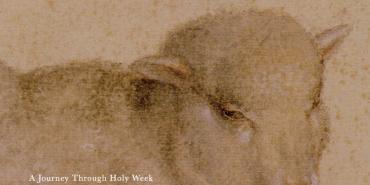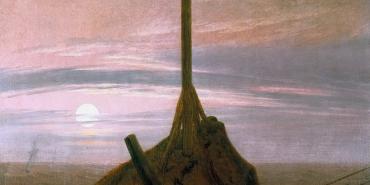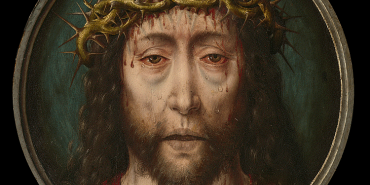Bubble Christians

Hanoi is a growing destination for tourists who sing, "I've been everywhere, man." Tourists cruise from the airport to their modern hotels and to selected points of interest "protected" in a bubble—a gigantic 44-passenger bus with clean restrooms, air conditioning, and comfortable reclining seats to facilitate naps between stops. Wide windows offer numerous "photo/video" opportunities that will amaze the folks back home.
Above the streets of the bustling city of seven million, tourists ride with no worries about the hoards of motorcycles, the pollution, or someone trying to sell something or practice English. Brochures promise: maximum comfort, minimum encounter. Still, back home, someone will quiz the tourist: "But weren't you scared over there?"
Also, Hanoi offers incredible encounters for adventurers who set out with maps, guide books, water, some money, and curiosity. The city's stalls, alleys, and shops offer treasures and "human moments."
The Vietnamese graciously help visitors navigate an incredible tangle of streets for human encounters that cannot be captured by even the most ingenious technology. I learned this when, through gestures and my laminated Missouri driver's license, I was admitted to do research in the National Library of Vietnam.
At the end of the day, "bubble" tourists fall asleep in a "Western-centric" hotel offering the comforts of home while the adventurer falls asleep in a noisy crowded hostel. Both review the day before falling asleep.
On the long flight home, after eight days studying death rituals in Hanoi, I reflected on something that has long troubled me.
Too many faith communities seem to be like tour buses, safe "bubbles" that turn faith into a pleasant journey rather than an adventure.
I find these characteristics of the "bubble bus" Church troublesome.
"Faith" protects individuals from serious encounters with the world outside. While they can "see" what is going on outside, they do not worry; they simply draw the curtains. The riders' perceptions of what is seen through the windows counts as reality inside the bubble.
Faith becomes comfortable. "If I had known traveling could be this comfortable," one traveler laughed, "I would have come years ago. I had a great steak last night at our hotel!" The journey is more enjoyable when companions inside the bubble look like us, think like us, and, more importantly these days, fear the things we fear.
Individuals grow inward. Walking in Hanoi in a group can be challenging. Someone might get lost and miss the next stop promised in the glossy brochure. The bus keeps the tourists all going in the same direction.
Individuals frantically avoid innovation. Inside the bubble suspicion is essential. Bubble Christians search the Internet for any hints of new faith developments that might threaten. And it does not matter if they understand the labels because the person who forwarded the E-mail does.
Bubble people cling to outdated thoughts and opinions. My trip challenged my notions of the Vietnamese people. If only I had a coin for everyone who asked, "Weren't you afraid of the Communists?"
By surrendering my personal comfort zone, and by human encounter with the Vietnamese, I was forced to surrender stale notions, particularly of Ho Chi Minh. I discovered that he once lived in New York City and also worked as a baker in Boston's posh Palmer House. I discovered that he appreciated the teachings of Jesus—particularly the Sermon on the Mount—but not the opinions of those who claimed to be the field reps for Jesus.
On Saturday evening I found my way to Saint Joseph's Cathedral and found a group of elderly women praying and singing. Ah, just as I suspected! This is what has become of Christianity in postwar Vietnam: old women. But since I was there—and it offered a quiet break from the bustling outside—I decided to sit a while. Although I did not understand their words, something in their praying and the intensity seemed familiar.
My assumption was soon shattered. I had misunderstood the time of the service. When I left the cathedral 90 minutes later, the congregation had swelled to standing-room only and the majority were young adults! (And they sang in the spirit, sans band, screens, and computers!)
The tourists missed the experience because they insisted on being back in their hotel—their backup bubble—before dark.
Folks in bubbles worship in sanitized isolation, comforted by beliefs, assuming they are right because of a doctrine rather than an experience, by a past rather than a vision.
Certainly, some bubble groups sense the chaos outside without getting too disturbed. They may even take an offering for those "poor people." They may even organize a one-week excursion outside the bubble.
Bubble inhabitants do not have to worry about destinations or side trips. They can leave everything to the tour "guide" who seems so pleasant and who speaks their language so well.
Somewhere there must be a graveyard for old tour buses that have been replaced with sleeker models offering more conveniences, which make riders feel even more comfortable.
Bubbles are not new. Jesus tried hard to convince the Jews to abandon their bubbles. He tried to stretch their imaginations of the breadth and depth and width of God's outrageously extravagant grace. Only a few dared follow Him out of the bubble. Unfortunately, over time some lost their courage and created their own bubbles, some with narrow tinted windows because grace is so bright.
It's easy to sing, occasionally, "Open my eyes, Lord, I want to see Jesus." It's more challenging to sing, "Open my eyes, Lord, I want to see the people Jesus sees." The One who said, "I am the light" (John 8:12) observed that a person does not light a candle and place it under a bushel, but rather on a candlestick to provide light to all (Matthew 5:15).
Would it not be wise to caution: Do not light a candle and place it inside a bubble?
Harold Ivan Smith is a faculty member for the American Academy of Bereavement and author of When You Don't Know What to Say (Beacon Hill Press).
Holiness Today, Jan/Feb 2011
Please note: This article was originally published in 2011. All facts, figures, and titles were accurate to the best of our knowledge at that time but may have since changed.




